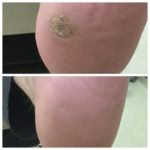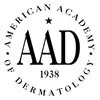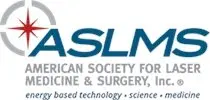Wart Removal in Washington, DC
Two main types of warts affect human skin. Human Papilloma Virus (HPV) accounts for the majority of wart infections. There are more than 70 types of HPV and they can occur anywhere on the body. Warts are named by their location (i.e. “plantar” is the bottom of the foot, and “genital” is on or near the genital areas). Although warts are contagious, the virus is so ubiquitous that it is usually not reasonable or possible to pinpoint the source of infection.
Warts often regress spontaneously, but this process can be slow. If a wart is painful or unsightly, professional treatment by a board-certified dermatologist is recommended. The most common treatment employed for wart removal are liquid nitrogen cryotherapy (freezing) as well as new topical or combination therapies. It is important to realize that no destructive modality is perfect and several treatments may be needed. Additionally, wart destruction may result in white spots or scarring, although these are infrequent complications.
Liquid Nitrogen Cryotherapy
This is the most common wart treatment procedure. Liquid nitrogen vapor is sprayed onto the wart and surrounding area thus causing freezing and subsequent thawing of the wart and a small area of surrounding skin. This is commonly repeated once or twice during each session. Over the following days the area treated normally develops a blister which takes part of the wart with it when it falls off. Small warts may only require a single treatment, however larger warts and plantar warts on the palms and soles can require multiple treatments spaced about a month apart.
Topical/Combination Therapy
One of the most exciting advances in the treatment of warts have been prescription compound preparations which can be used at home either either as a standalone therapy or alongside traditional wart treatments such as cryotherapy. These inexpensive topical compounds are mixtures of strong chemical peeling solutions and anti-viral agents which work to break up thickened wart tissue while simultaneously killing the wart virus preventing its regrowth. With proper usage most warts, even large plantar warts, can be fully removed in 6-12 weeks without the need for multiple office visits and their associated cost and hassle. Certain warts may require combination in-office liquid nitrogen treatment along with at-home treatment for a more dependable response.
Laser Wart Removal
With the development of powerful topical and combination treatments mentioned above the use of lasers for the treatment of warts has fallen out of favor among the laser dermatologist community. We currently do not perform laser wart removal in our office.
Molluscum Contagiosum
Another type of wart virus (a pox virus) causes molluscum contagiosum. These are small, dome shaped bumps found most commonly on children. Childhood molluscum are ultimately harmless and do not require treatment as they will usually regress on their own after several months or even years. If treatment is desired either liquid nitrogen cryotherapy or cantharone (blistering agent) may be utilized. Adults can also be affected by molluscum. Adult molluscum, typically a separate strain of the virus, is generally transmitted sexually with lesions noted in the groin or on the genitals. Like childhood molluscum, adult molluscum typically regresses on its own after a period of time but if treatment is desired liquid nitrogen cryotherapy is highly effective in treating active lesions.






